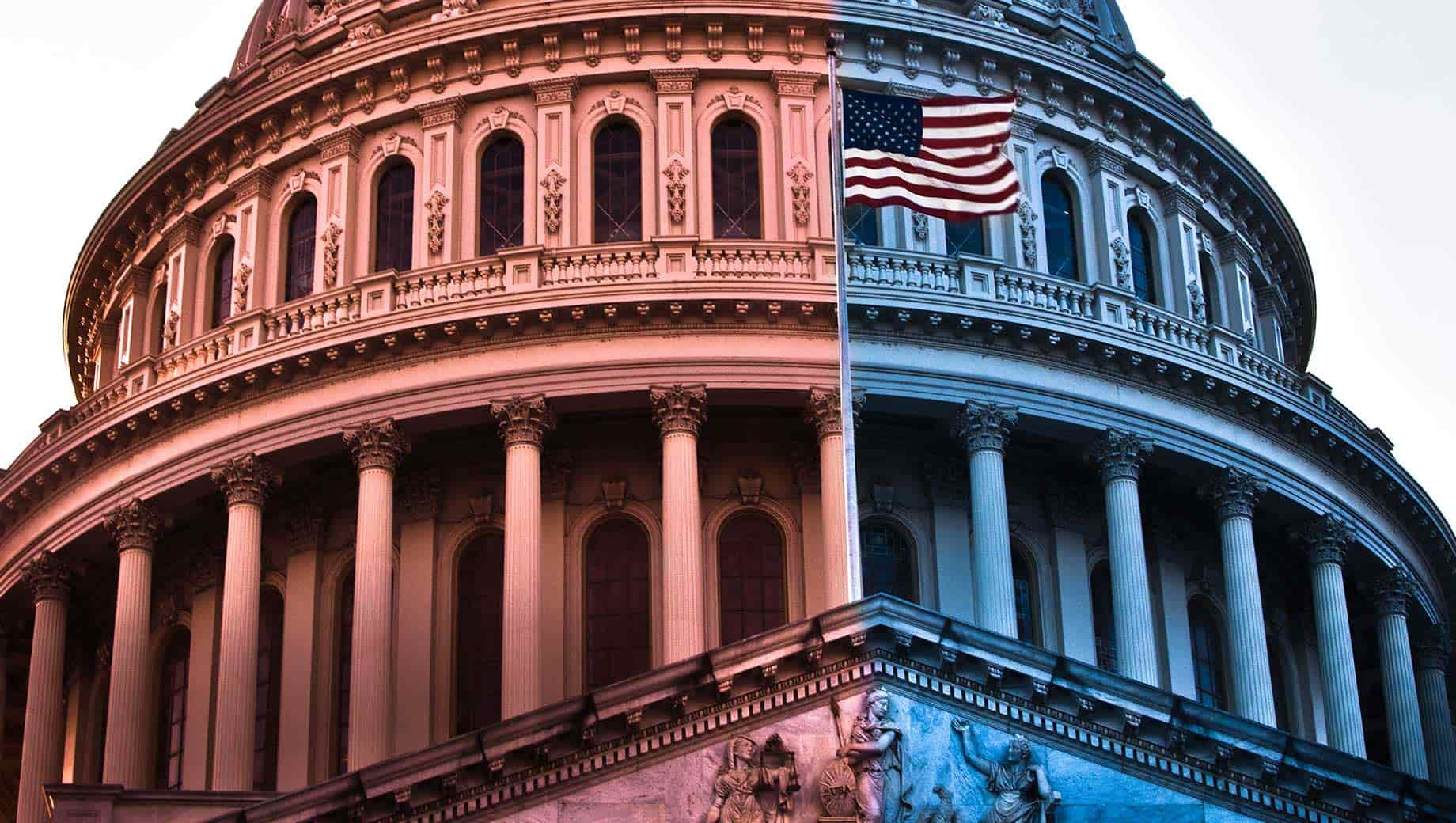Story Highlights
- 45% identified as or leaned Republican; 44% identified as or leaned Democratic
- Democrats had at least a three-point edge each year from 2012 to 2021
- Largest percentage of Americans still identify as independent
WASHINGTON, D.C. -- Americans’ party preferences were evenly divided in 2022, with 45% of U.S. adults identifying as Republican or saying they were Republican-leaning independents, and 44% identifying as Democrats or saying they were Democratic-leaning independents. The last time preferences were this closely divided was in 2011, with Democrats holding at least a three-percentage-point advantage in each year of the past decade.
More generally, stretching back to 1991, when Gallup began regularly measuring party identification and leaning, Democrats have held an edge in most years.
The latest results are based on combined data from 2022 Gallup telephone surveys, which encompass interviews with more than 10,000 U.S. adults. In each survey it conducts, Gallup asks Americans whether they identify politically as a Republican, a Democrat or an independent. Independents are then asked a follow-up question about whether they “lean” more toward the Democratic Party or the Republican Party. The combined measure of partisan identification and leanings gives an indication of party strength in the U.S. population.
A virtual tie in party identification and leaning represents one of the better outcomes for the Republican Party over the past three decades. Only once, in 1991, after then-president George H.W. Bush led the successful Persian Gulf War, did significantly more Americans identify as or lean Republican (48%) than Democratic (44%).
Party preferences were previously tied or separated by one point in 2001 through 2003 and in 2010 and 2011. The earlier stretch included the first three years of George W. Bush’s presidency, which were shaped largely by strong public support for Bush after the 9/11 terrorist attacks. The later period included the second and third years of Barack Obama’s presidency, when his popularity sagged and the Tea Party movement gained influence in American politics.
The stronger year for Republicans in 2022 was manifested in their party’s winning control of the U.S. House of Representatives. Nationwide, more voters cast ballots for Republicans than Democratic U.S. House candidates last year by a margin of about three points. However, Republicans were not able to gain a majority in the U.S. Senate.
Largest Percentage of Americans Still Identify as Independents
When Gallup began conducting its interviews exclusively by telephone in 1988, there were similar proportions of Democrats, Republicans and independents in the U.S. In the early 1990s, independents began to outnumber Republicans and Democrats, but that advantage faded in the early 2000s.
However, since 2009, independent identification has grown and reached levels not seen before. Now, political independents (41%) greatly outnumber Republican (28%) and Democratic (28%) identifiers.
The 2022 figures represent a one-point increase in Republican identification compared with 2021, and one-point declines in Democratic and independent identification.
Last year also marked only the ninth time in the past 35 years in which Democrats did not hold at least a slight advantage (of two or more points) over Republicans in party identification. This also occurred in 1991, 1995, 2001 through 2005, and 2020.
Since 2011, no less than 39% of Americans have identified as independent, with the percentage 40% or higher in all but the 2016 and 2020 presidential election years. Before 2011, independent identification reached as high as 39% only twice: in 1995 and 2007.
A 2022 Gallup analysis found that increased independent identification appears to be driven in large part by Generation X and the millennial generation continuing to identify as independents as they age. In prior generations, U.S. adults became less likely to identify as independents as they got older. About half of millennials and more than four in 10 in Generation X currently identify as independents, compared with less than a third in older generations.
Bottom Line
Last year was not as strong a year for Republicans electorally as they had wanted. Although they won a majority of House seats, they were hoping to win a larger majority than they did, which played out this month in their difficulty electing a Speaker of the House. The GOP also failed to win a majority in the Senate, though they needed a net pickup of only one seat to do so.
However, the Republicans did have a better year from the standpoint of reaching parity with Democrats, in U.S. adults’ party identification and leaning. Americans' dissatisfaction with the state of the nation at a time when Democrats controlled the presidency and both houses of Congress likely is the cause of the 2022 shift in party leanings. Similar shifts occurred in 1994 and 2010. Dissatisfaction with the state of the nation under Republican leadership also likely accounts for the shifts toward greater Democratic Party identification and leaning seen between 2006 and 2008.
To the extent history is a guide, 2023 party preferences may be similar to those in 2022. The years 1995, 2007, 2011 and 2019 showed party divisions similar to the prior year’s after the president’s party lost control of the House in the midterm elections.
To stay up to date with the latest Gallup News insights and updates, follow us on Twitter.
Learn more about how the Gallup Poll Social Series works.




